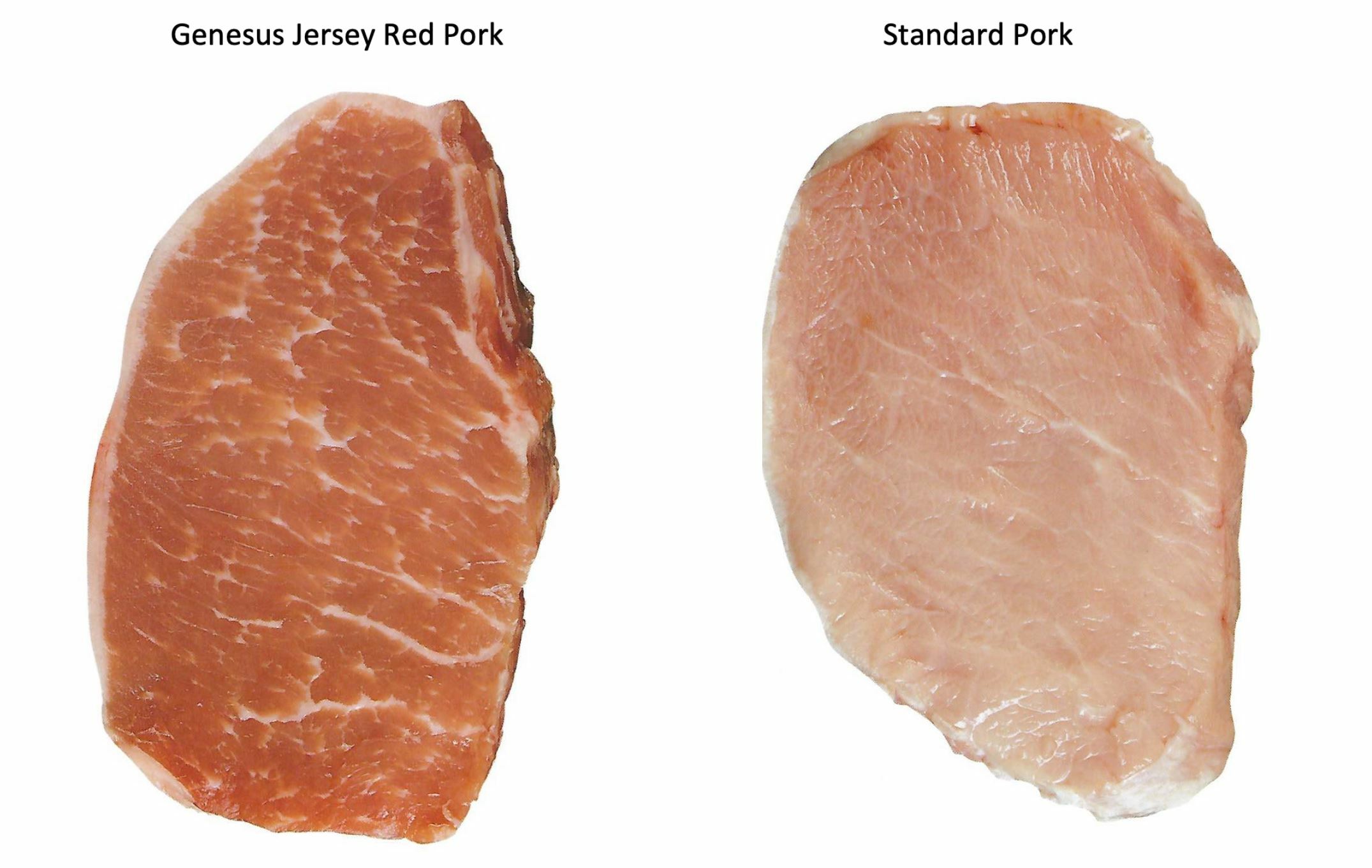



Genesus Technical Report: Drip loss the hidden loss
Genesus' Simon Grey speaks about the loss of fluid from the pig carcassDrip loss or purge is the loss of fluid from the carcass, it is the opposite of water retention. It is economically important in several ways.
1. For the slaughter plant. Most slaughter plants look closely at Killing Out %. This is the weight of carcass as a % of the live pig. This weight is taken whilst the pig is stall warm after slaughter.
The reality is that slaughter plants do not sell or send for processing hot carcasses. They send chilled a carcass – that has experienced drip loss. Excessive drip loss means a direct loss of saleable meat.
Many slaughter plants that measure drip loss will state it to be in the 2.4% to 3% range depending upon genetic type. On a 95kg carcass this means a loss of 2.28 to 2.85kg (5.0 to 6.3 lbs). More importantly this loss is almost entirely muscle weight, the part of the pig with the most value!
2. For the retailer, drip loss in packaging makes the product look less desirable. For retailers, meat is a destination product. People will go to a specific retailer to buy their meat because of the quality and whilst in the shop do the rest of their shopping. If retailers lose the meat business they tend to lose the other business with it!
3. For the consumer, poorer eating quality. Obviously higher drip loss or lower water retention will mean dryer and therefore tougher pork. This for the vast majority of consumers means less desirable pork. If we want to sell more pork and sell pork at a higher price, then it has to be desirable!
Genesus’ core belief is that, as an industry we have to produce tasty, juicy pork that people want to eat. This very simply means marbled, darker pork with low drip loss! This seems really obvious, but sadly the pork industry has failed to do this. The constant drive to lower production costs have resulted in selection for lowbackfat and low FCR and has given us the pale, dry and tasteless pork we see on many supermarket shelves today.
Genesus, despite pressure from farmers and slaughter plants to follow the others and produce leaner pork, has never changed course. Our competitors often use the line “you can afford to produce tasty pork” when we are competing for business. Our data shows no unfavourable relationship between FCR and marbling in our Jersey Red Duroc population. It is possible to produce higher quality pork at an industry competitive cost of production.
Drip loss is very related to pH of carcass. Measure pH 45 minutes after slaughter and 24 hours after slaughter. Generally the higher the pH the lower the drip loss. A small word of caution, very high pH is related to Dry Firm Dark (DFD) pork. For over 25 years, Genesus has been selecting for tasty and succulent pork. Its therefore no wonder it is the market leader today. This continual selection means today Genesus has the lowest level of drip loss at 1.4%.

The 1.4% drip loss for Genesus means that it is 1% to 1.6% lower than many others. This means about 1kg more of saleable meat per carcass. With the retail price of pork around €5 per kg (US$ 2.47/lb)this is a significant advantage for Genesus and an advantage that few will have even knew existed!
What would you buy??

Imagine the benefit to your business if consumers chose to eat more pork and even pay more!








